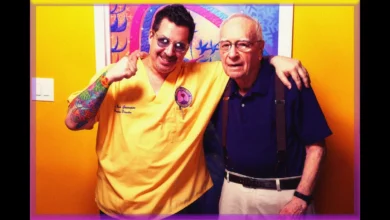“Rhyme Without Reason Ideas: Unleashing Creativity Through Nonsensical Verse”

Introduction
rhyme without reason ideas ideas, a phrase coined by 17th-century English poet John Dryden, refers to the art of crafting rhymes without any underlying meaning or purpose. This unique form of poetry has been a staple of literary expression for centuries, allowing writers to tap into their creative subconscious and produce works that are both whimsical and thought-provoking. In this article, we’ll delve into the world of rhyme without reason, exploring its history, benefits, and ideas to help you get started on your nonsensical verse.
History of Rhyme Without Reason Ideas
Rhyme without reason Ideas has its roots in ancient cultures, where oral traditions and folk songs relied heavily on rhyming schemes to convey stories and myths. The term itself was first used by John Dryden to describe the works of his contemporaries, who prioritized rhyme over reason and meaning. Over time, this style of poetry has evolved, influencing notable poets like Edward Lear, Lewis Carroll, and Dr. Seuss, who have all made significant contributions to the genre.
In the 19th century, the rise of nonsense verse led to a surge in popularity for rhyme without reason Ideas. Poets like W.S. Gilbert and Arthur Sullivan created comedic operas that showcased the art of nonsensical rhyming. Today, rhyme without reason continues to inspire writers, musicians, and artists, offering a unique outlet for creative expression.
Benefits of Rhyme Without Reason Ideas

So, why engage in rhyme without reason Ideas? This style of poetry offers several benefits, including:
- Creative freedom: Rhyme without reason Ideas allows writers to break free from the constraints of traditional poetry, where meaning and message are paramount. By embracing nonsensical verse, you can tap into your imagination and explore new ideas and themes.
- Improved linguistic skills: Crafting rhymes without reason requires a deep understanding of language, syntax, and phonetics. By practicing this style of poetry, you can develop your linguistic skills and become a more effective communicator.
- Stress relief and relaxation: Rhyme without reason Ideas can be a therapeutic outlet, providing a much-needed break from the pressures of everyday life. By embracing the absurd and illogical, you can find solace in the creative process.
- Enhanced creativity: Rhyme without reason encourages writers to think outside the box and explore unconventional ideas. This can lead to a surge in creativity, as you’re forced to think differently and challenge your assumptions.
Ideas for Rhyme Without Reason
Ready to give rhyme without reason Ideas a try? Here are some ideas to get you started:
- Wordplay: Experiment with homophones, homographs, and other linguistic tricks to create clever and absurd rhymes.
- Surrealism: Draw inspiration from the world of dreams and the subconscious, crafting rhymes that defy logic and reason.
- Absurd scenarios: Imagine bizarre situations and events, then craft rhymes that bring these scenarios to life.
- Nonsense characters: Create outlandish characters and tell their stories through rhyme, exploring their quirks and eccentricities.
- Parody and satire: Use rhyme without reason Ideas to poke fun at serious topics, highlighting the absurdity of certain situations or ideologies.
- Playful language: Experiment with alliteration, assonance, and consonance to create a playful and musical quality in your rhymes.
- Collaborative creativity: Work with others to craft rhymes, bouncing ideas off each other and pushing the boundaries of creativity.
Examples of Rhyme Without Reason
- Edward Lear’s “The Owl and the Pussycat”: A classic example of nonsense verse, this poem tells the story of an unlikely friendship between an owl and a pussycat.
- Dr. Seuss’s “The Cat in the Hat”: This beloved children’s book is a masterclass in rhyme without reason Ideas, featuring whimsical characters and absurd scenarios.
- Lewis Carroll’s “Jabberwocky”: A poem that defies interpretation, “Jabberwocky” is a prime example of rhyme without reason Ideas, featuring made-up words and illogical rhymes.
- W.S. Gilbert’s “The Pirates of Penzance”: This comedic opera is a showcase for rhyme without reason Ideas, featuring absurd characters and scenarios.
Tips and Tricks
- Embrace the absurd: Don’t be afraid to get silly and absurd in your rhymes. The more illogical, the better!
- Experiment with language: Play with words, sounds, and rhythms to create a unique and musical quality in your rhymes.
- Don’t worry about meaning: Remember, rhyme without reason Ideas is all about embracing the nonsensical. Don’t worry if your rhymes don’t make sense – just have fun!
- Use your senses: Draw inspiration from the world around you, incorporating sensory details to bring your rhymes to life.
- Play with form: Don’t be afraid to experiment with different forms and structures, pushing the boundaries of traditional poetry.
Conclusion
Rhyme without reason Ideas is a liberating and creative outlet, offering a world of possibilities for writers and poets. By embracing the absurd and illogical, you can tap into your imagination and produce works that are both whimsical and thought-provoking. Remember, the art of rhyme without reason is all about having fun and pushing the boundaries of language and creativity. So, don’t be afraid to get nonsensical – your inner poet is waiting!





